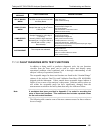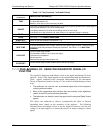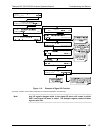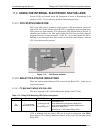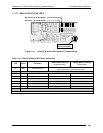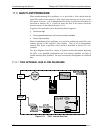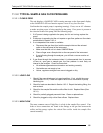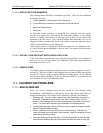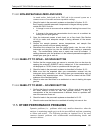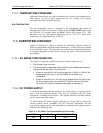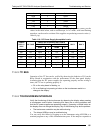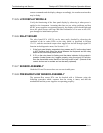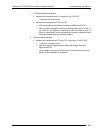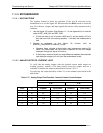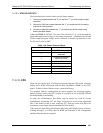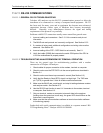
Teledyne API T803 CO2/O2 Analyzer Operation Manual Troubleshooting and Service
193
11.4.2. NON-REPEATABLE ZERO AND SPAN
As stated earlier, leaks both in the T803 and in the external system are a
common source of unstable and non-repeatable readings.
1. Check for leaks in the pneumatic systems as described in Section 10.3.3.
Don’t forget to consider pneumatic components in the gas delivery system
outside the T803 Such as:
A change in zero air source such as ambient air leaking into zero air line,
or;
A change in the span gas concentration due to zero air or ambient air
leaking into the span gas line.
2. Once the instrument passes a leak check, do a flow check (See Section
10.3.4) to make sure adequate sample is being delivered to the sensor
assembly.
3.
Confirm the
sample pressure, sensor temperatures, and sample flow
readings are correct and have steady readings.
4. Disconnect the exhaust line from the optical bench near the rear of the
instrument and plug this line into the SAMPLE inlet creating a pneumatic
loop. The concentration (either zero or span) now must be constant. If
readings become quiet, the problem is in the external pneumatics supplies for
sample gas, span gas or zero air.
11.4.3. INABILITY TO SPAN – NO SPAN BUTTON
1. Confirm that the oxygen span gas source is accurate; this can be done by
opening the analyzer’s SAMPLE inlet to ambient air. If the concentration is
not displayed as ~20.9%, there is a problem with the span gas.
2. Check for leaks in the pneumatic systems as described in Section 10.3.3.
3. Make
sure that the expected span gas concentration entered into the
instrument during calibration, is the correct span gas concentration and not
too different from expected span value. This can be viewed via the CONC
submenu of the Sample displays.
4. Check to make sure that there is no ambient air or zero air leaking into span
gas line.
11.4.4. INABILITY TO ZERO – NO ZERO BUTTON
1. Confirm that there is a good source of zero air. Dilute a tank of span gas with
the same amount of zero air from two different sources. If the O
2
concentration of the two measurements is different, there is a problem with
one of the sources of zero air.
2. Check for leaks in the pneumatic systems as described in 10.3.3.
3. Che
ck to make sure that there is no ambient air leaking into zero air line.
11.5. OTHER PERFORMANCE PROBLEMS
Dynamic problems (i.e. problems which only manifest themselves when the
analyzer is monitoring sample gas) can be the most difficult and time consuming
to isolate and resolve. The following provides an itemized list of the most
common dynamic problems with recommended troubleshooting checks and
corrective actions.
07276B DCN6418



